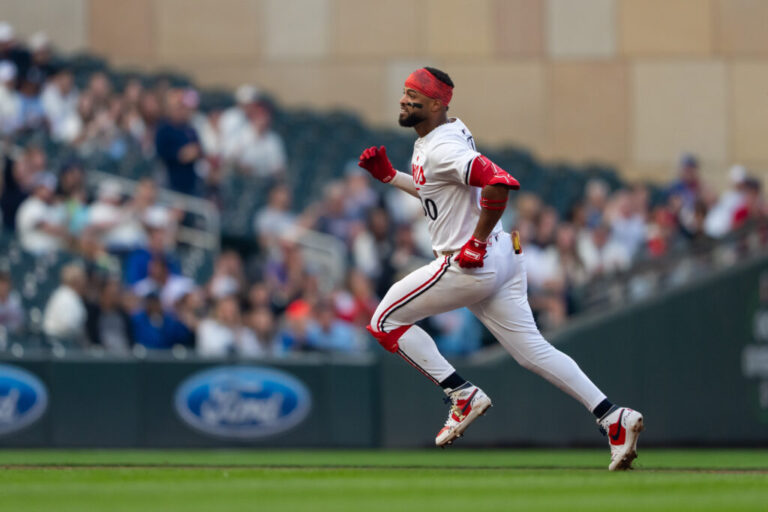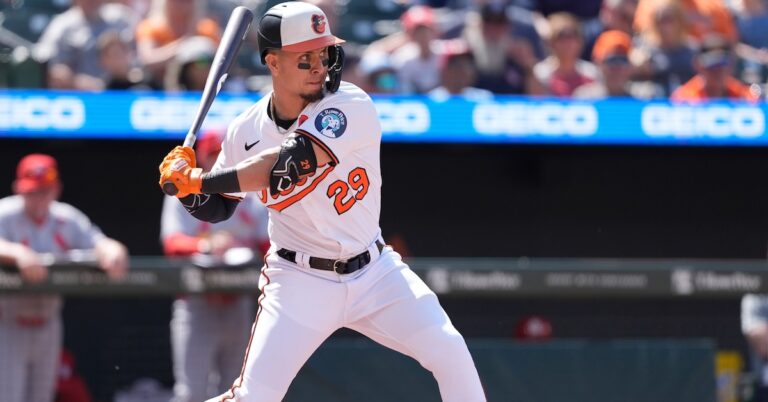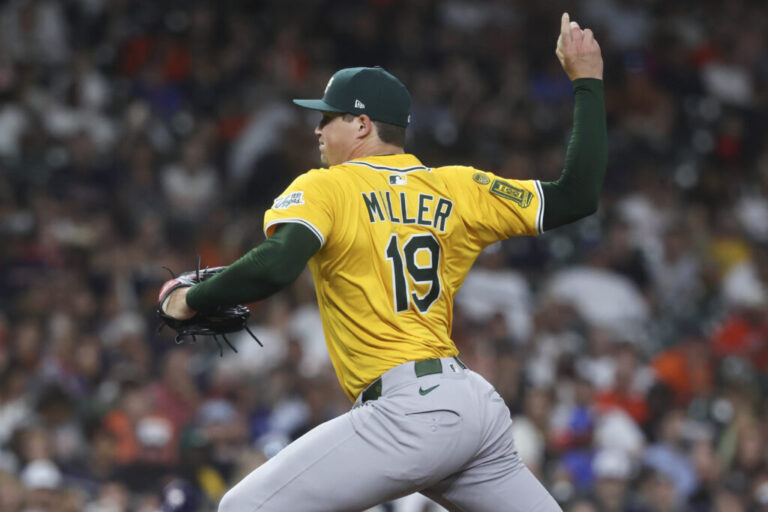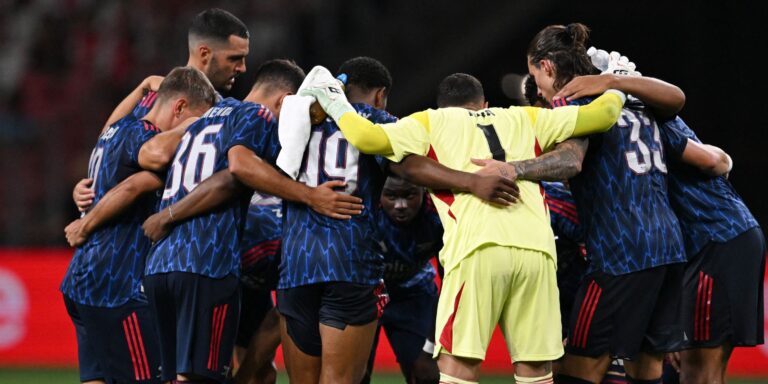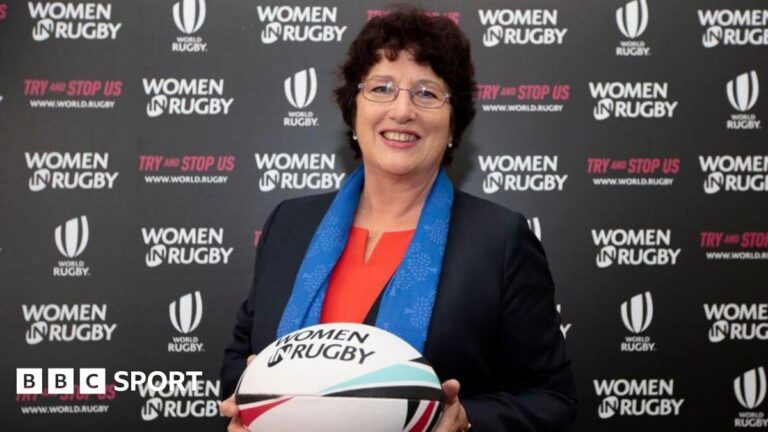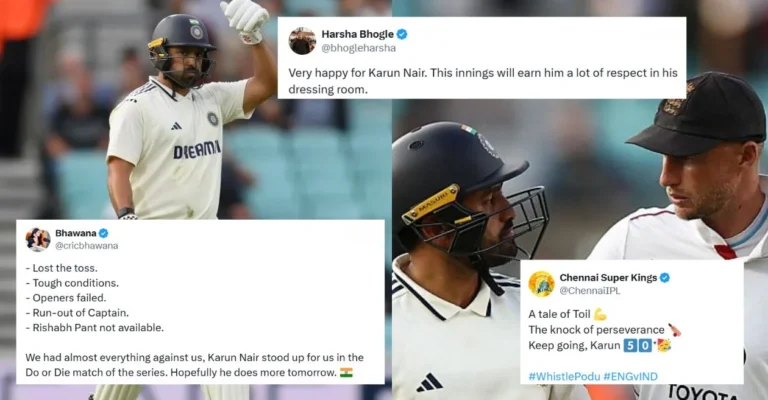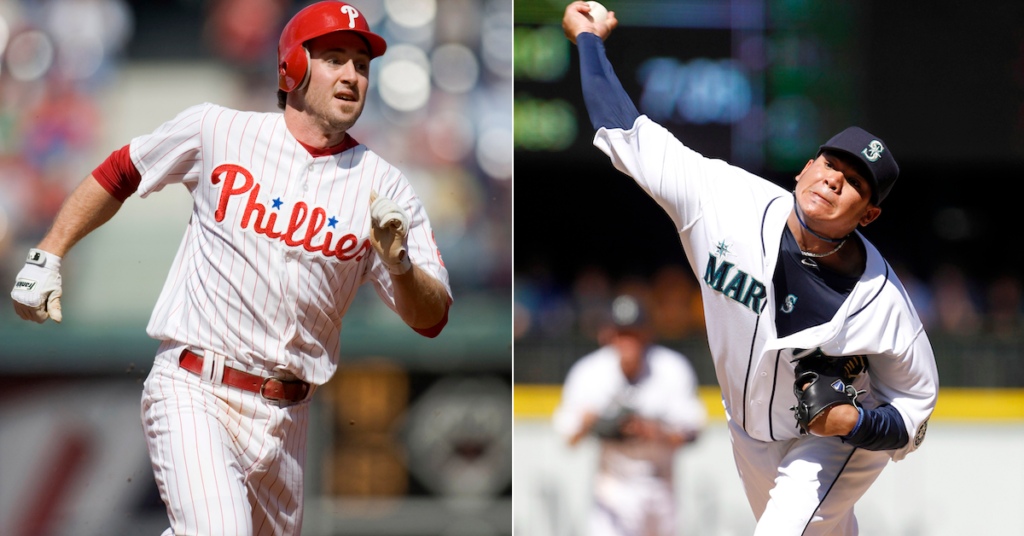

The following article is part of Jay Jaffe’s ongoing look at the candidates on the BBWAA 2025 Hall of Fame ballot. For a detailed introduction to this year’s ballot, and other candidates in the series, use the tool above; an introduction to JAWS can be found here. For a tentative schedule, see here. All WAR figures refer to the Baseball Reference version unless otherwise indicated.
The 2025 Hall of Fame election is in the books, with another trio — first-year candidates Ichiro Suzuki and CC Sabathia joined by 10th-year candidate Billy Wagner — getting voted in by the Baseball Writers Association of America. While Suzuki’s possible unanimity and Carlos Beltrán’s strong showing on publicly tracked ballots created some amount of suspense leading up to the announcement, nobody scraped the bar; all three candidates who made the cut cleared at least 80% of the vote. The last time everybody elected made it by such a comfortable margin was in 2016, when Ken Griffey Jr. (99.3%) and Mike Piazza (83%) gained entry, with the class of ’18 just missing out because Trevor Hoffman (79.9%) lagged. Suzuki, Sabathia, and Wagner will be inducted in Cooperstown along with Classic Baseball honorees Dave Parker and the late Dick Allen on July 27, 2025.
Here’s a tidbit you might not have been aware of that ties this class together: all three honorees are natural-born right-handers who learned to do their most important job left-handed. Wagner famously broke his right arm twice at age seven and learned to throw lefty, Sabathia struggled in T-ball until switching hands, and Suzuki was taught to hit lefty by his father. Both pitchers took their cuts lefty as well, though Ichiro threw right-handed.
As usual, beyond the topline results, there’s plenty to ruminate on. So as promised, here’s my candidate-by-candidate breakdown of the entire slate of 28 candidates, 15 of whom will return to the ballot next year. Note that except where indicated, all references to percentages in Ryan Thibodaux’s indispensable Tracker are based upon data as of 9 a.m. ET on Thursday.
Hanley Ramirez, Fernando Rodney, Ben Zobrist (1st year on the ballot, 0.0%)
Here it is, my annual opportunity to invoke the memory of Vin Scully, who liked to remind viewers, “They also serve who only stand and wait.” According to Baseball Reference, 227 players last appeared in the majors in 2019. Just 14 of them (6.2%) lasted long enough and had careers substantial enough to land on this ballot. So this bears repeating annually: There is no shame in being shut out on a Hall of Fame ballot. A checkbox next to these players’ names is the reward for their individually impressive careers, and with every year that I do this, my appreciation for the endurance, perseverance, and good luck it takes just to get to this point grows.
Though he has the lowest JAWS of any candidate I’ve ever covered at length, either at Sports Illustrated or at FanGraphs, I particularly had a blast writing about Rodney, whose backstory and idiosyncrasies I knew comparatively little about. And Zobrist, wow. His 44.5 WAR isn’t the highest of any player to be shut out, as pitcher Frank Tanana (57.1) and center fielder Jimmy Wynn (55.8) are among those who were blanked. But Zobrist did lead his league in WAR once (twice, actually, until Sports Info Solutions rejiggered its accounting for defensive shifts), won two World Series rings, and did nothing less than change the way the industry thought about roster construction. Only a comparatively short career — 10 seasons with more than 250 plate appearances — kept him from getting stronger consideration from the electorate.
Carlos González (1st, 0.5%), Curtis Granderson (1st, 0.8%), Adam Jones (1st, 0.8%), Troy Tulowitzki (1st, 1.0%)
While none of these candidates received a vote on a ballot that was recorded on the Tracker prior to the announcement of the results, all received between two and four votes, not because voters truly believed they merited a plaque in Cooperstown, but as a way to extend them a small courtesy (Curtis-y?), a gesture of respect or gratitude. When the slates were overstuffed a few years ago, such gestures drew the ire of those spending too much time watching the Tracker (myself included), but on ballots with more breathing room, they’re a bit of goodwill that I’ve learned to appreciate, if not a practice in which I partake. Writing about these guys, I was reminded of what absolute beasts CarGo and Tulo were when young and healthy, and what mensches Granderson and Jones showed themselves to be with their off-field endeavors.
Brian McCann (1st, 1.8%), Russell Martin (1st, 2.3%)
Meet the Lou Whitaker and Bobby Grich of catchers. No results on this ballot grind my gears the way the electorate’s failure to support this pair of backstops does. We’re more than a decade and a half into the pitch-tracking era, and we can quantify the value of turning high volumes of balls into strikes, a repeatable skill that these two did about as well as any catchers for whom we have data. And this skill will remain relevant barring a dramatic reversal in attitudes toward the automated ball and strike system, which whenever it gets to the majors will be used for a small number of challenges per game, not as a pitch-by-pitch arbiter.
Thanks to their skills behind the plate and at it, Martin and McCann were key components of playoff teams again and again, and it wasn’t an accident. Including their offense and baserunning, they were right in line with the values of the recently elected Ivan Rodriguez and Joe Mauer, as well as upcoming candidates Buster Posey and Yadier Molina. And while the latter pair is probably destined to join the former in Cooperstown within the next several years, Martin and McCann may have to wait decades before they get a shot on a committee ballot — and odds are they’ll be competing with each other for those scarce spaces. Grrr. To date, Whitaker (2.9% in 2001) has one Era Committee appearance, Grich (2.6% in 1999) none, so don’t hold your breath.
Ian Kinsler (1st, 2.5%)
Just 25 second basemen (as classified by JAWS) have accumulated at least 50 WAR in the majors. Fifteen of them are already enshrined, two are still active (Jose Altuve and Robinson Canó, the latter of whom played in the Mexican League in 2024), two are Whitaker and Grich, one is awaiting his shot on next year’s Contemporary Baseball ballot (Jeff Kent), one is a somewhat forgotten proto-Zobristian OBP savant (Tony Phillips), one is Willie Randolph. The other three are on this ballot, namely Kinsler, Dustin Pedroia, and Chase Utley. Kinsler and Pedroia have similar WARs and JAWS, but the latter compressed that value into a career that was 20% shorter and might well have been Hall-worthy if not for injuries. Kinsler just wasn’t quite up to that level, but he really was one hell of a player.
Torii Hunter (5th, 5.1%, down -2.2%)
Hunter was the only one of the 14 holdovers whose share of the vote actually dropped relative to 2024, which, ouch. His electoral fate could have been even worse, however. With a net -3 among returning voters and an 0-for-16 shutout among first-time voters, he received just five votes (2.3%) on the ballots published prior to the announcement, and so Jason Sardell’s final pre-results forecast estimated his odds of falling off the ballot at 91%, compared to 93% for Kinsler and 96% for the two catchers. Hunter received 8.2% from private voters, however, and his +5.6% private-vs.-public differential is the third-largest gap among any candidate, so he got exactly enough total votes (20) to maintain his spot on the ballot for next year.
David Wright (2nd, 8.1%, up 1.9%)
Viewed as a Hall-path-before-injuries player, Wright appears to have benefited from the arrival of Pedroia with his similarly shaped career. A dozen pre-announcement public voters included both candidates on their ballots, including three who added Wright and one first-time voter who tabbed both. It still didn’t amount to a huge gain, but it’s enough that I expect Wright to linger in the lower reaches for a while, particularly with fewer obvious first-ballot types coming in the near future.
Francisco Rodríguez (3rd, 10.2%, up 2.4%)
It appears there was a Wagner coattail effect as well. All 17 of Rodríguez’s public votes came from voters who also included the Hall-bound closer, with three of the latter’s supporters adding the former this year, with one returning voter and one first-timer including both as well. While Rodríguez actually received a higher first-year share than Wagner (10.8% in 2023 vs. 10.5% in 2016) and isn’t far behind Wagner’s third-year share of 11.1%, I don’t expect his support to snowball the way that Wagner’s did. Yes, K-Rod has a few more saves, but he also has an ERA more than half a run higher, and he lacks the statistical superlatives of Wagner, who has the lowest opponent batting average, the highest strikeout rate of any pitcher with at least 900 innings, and (until this announcement) the highest R-JAWS of any reliever outside the Hall.
What’s more, Wagner’s off-field story — the natural right-hander who learned to throw left-handed, and who escaped an unstable home situation and extreme poverty — was a positive element of his candidacy. Rodríguez, whose early life did include the separation of his parents and other difficult circumstances, doesn’t get the same goodwill. He was arrested twice, first in 2010 for assaulting his girlfriend’s father (resulting in a guilty plea, a season-ending injury, and the loss of his salary for the time missed) and then in 2012 for a separate incident of domestic violence against his fiancée. (Those charges were dismissed when she and a witness to the alleged assault left the country.) In light of those blotches on his record, it does seem icky that his +5.9% private-vs.-public differential is the second-largest gap of the entire slate.
Mark Buehrle (5th, 11.4%, up 3.1%)
Halfway through his eligibility window, Buehrle is just 0.4% ahead of his debut share and has yet to post back-to-back gains. Still, he has persisted on the ballot to the point where the conversation about starting pitching standards is picking up steam, as evidenced by the easy election of Sabathia, the rise of Andy Pettitte (who was just 2.7% ahead of Buehrle circa 2021), the solid debut of Félix Hernández, and the increasing inaccessibility of even 200 wins for today’s starters. I’d expect Buehrle to gain at least some momentum over the next few years and to persist on the ballot through his full eligibility window, giving him at least some shot at election via committee down the road.
Dustin Pedroia (1st, 11.9%)
He didn’t make an overwhelming debut. Yes, Wagner and Scott Rolen (10.2% in 2018) were both eventually elected despite lower first-year shares, but those happened amid more crowded ballots. I don’t see any mentions in the Tracker of voters who would have included Pedroia if not for the 10-man limit the way there were for those two. That said, given the boxes he checks — the awards, the championships, the positive narrative hooks — I wouldn’t be the least bit surprised to see Pedroia’s candidacy gather momentum, particularly as traffic thins out.
Omar Vizquel (8th, 17.8%, up 0.1%)
Despite reports of Vizquel’s continuing efforts to rehabilitate his image by personally reaching out to voters, with at least two of them publicly flipping from no to yes, he lost far more (one of his three remaining years of eligibility) than he gained (two more votes than last year’s final total). His share is still only about one-third of what it was on the 2020 ballot, prior to the reports of his domestic violence incidents and a sexual harassment lawsuit by a former batboy from the minor league team he managed. His 11.2% public-to-private differential was the largest of any candidate, but that still amounts to just 24.1% of private voters including him, which won’t get him to Cooperstown anytime soon.
Jimmy Rollins (4th, 18%, up 3.2%)
While his longtime Phillies teammate Chase Utley gained 11%, Rollins’ improvement was less than a third of that, though he did benefit from his double play partner’s rise. I count 27 pre-announcement public voters whose ballots included both candidates, with five voters adding both this year, four adding Rollins after previously including Utley, and two the other way around. Meanwhile, one voter dropped Rollins while adding Utley despite having room for both. A different voter, who added Rollins to go with Utley last year, kept Rollins this time around while dropping Utley. This voter did not give any explanation for this decision, though he did vote for the maximum 10 people.
Bobby Abreu (6th, 19.5%, up 4.7%)
He tied Andruw Jones for the fifth-highest gain among returning candidates, but after losing a bit of ground last year due to ballot triage, his candidacy isn’t really making headway. According to Adam Dore’s breakdown, Abreu went just 3-for-88 (3.4%) on public ballots that included six or fewer names (he was 2-for-103 on those with seven or fewer last year), and just 6-for-18 (33.3%) among first-time voters.
Félix Hernández (1st, 20.6%)
Given his statistical shortages on both the traditional and advanced fronts, King Félix’s debut share has to be taken as a positive, even if some voters (like myself) included him only to help ensure he wasn’t cast into one-and-done oblivion like two-time Cy Young winner Johan Santana in 2018. Repeating a table I ran on Tuesday night in connection with Wagner’s election, Hernández’s share is ahead of the debut marks of seven candidates who were eventually elected, five of them within the past decade. Two of those seven are starting pitchers, though both had much greater longevity and beefier counting stats:
Lowest First-Year Voting Percentages of BBWAA-Elected Players
With Sabathia in, with Pettitte setting a new high, and with Hernández surviving the first cut, the table is now set for an extended conversation about starting pitcher standards. That doesn’t mean anyone will break the deadlock soon, but it’s not nothing.
Andy Pettitte (7th, 27.9%, up 14.4%)
Pettitte more than doubled his 2024 level of support, but that comes after losing ground in two of the previous three elections. He had the second-largest net gain among returning public voters (+26, despite my dropping him as a triage measure). As the Tracker team’s Anthony Calamis pointed out, 20 of his first 21 additions in that department came from voters who had previously checked the names of Barry Bonds and Roger Clemens, which is to say that they viewed his PED transgressions from the pre-testing era in the same light.
Pettitte’s topline similarities to Sabathia in terms of won-loss record, ERA, ERA+, and WAR should help his cause. One thing I intended to look into — and then promptly forgot about over the course of the next nine months — is an idea from Sam Miller regarding championship WPA, based on his observation from last February about the way that the ever-expanding playoffs have shifted the volume of cWPA away from late regular-season games to postseason ones. Here’s part of what Sam wrote in his Pebble Hunting Substack:
However, I think there’s one basic-arithmetic statistic still out there for somebody to invent. It’s a career value metric that incorporates postseason performance. I am not likely to be the person who creates this stat. Balancing a regular-season homer against a postseason homer is a values conundrum that one could spend decades on, even before getting into the complicated adjustment for eras that have different playoff formats. I can say with certainty that cWPA is way too blunt of a measure on its own, despite my happy reliance on it for this article. But something needs to exist that puts Yordan Álvarez’ postseason stats into his record, preferably weighting them properly for their significance to what everybody out there is actually playing for.
WAR (and therefore JAWS) is a statistic that strives to strip out context as much as possible in order to level the playing field for the purposes of comparison. WPA (and cWPA) do the opposite, in that they depend upon context. I don’t intend to create something that adds one directly to the other, but I do want to play in the sandbox with some data and see if there’s anything that sticks together. I suspect that given his lengthy postseason résumé, Pettitte could benefit from such an analysis, but the fact remains that he’s running out of time on the writers’ ballot.
Manny Ramirez (9th, 34.3%, up 1.8%), Alex Rodriguez (4th, 37.1%, up 2.3%)
While first-time voters gave them comparatively stronger support (50% and 56.3%, respectively) than their overall shares, Manny and A-Rod were net negative (-3 and -2, respectively) among returning public voters, and even if you added their shares together, they’d still fall short of 75%. In other words, nothing has really changed regarding the ballot’s two players who were formally disciplined for PED infractions. Ramirez is now heading into his final year of eligibility on the BBWAA ballot, but I wouldn’t expect a surge.
Chase Utley (2nd, 39.8%, up 11.0%)
Utley received 51.9% in pre-results published ballots and thus had the largest private-vs.-public drop-off (-26.6%) of any candidate, which shouldn’t be too surprising given the extent to which his case rests on new-school metrics. Still, the glass is very obviously half full here. Not only has Utley already far outstripped the limited support of Rollins despite having the shorter career and fewer awards, but his share of the vote is well ahead of those of many recent honorees, including the slow-starting ones above. Consider that Walker didn’t get past the halfway point to 75% until his eighth year on the ballot, and that even Wagner (sixth), Rolen (fourth), and Helton (third) needed more time. Utley heads into next year with the third-highest share of any returnee, and he’s already nearing Kent’s 10th-year high of 46.5%. Aside from Kent and the two returning center fielders from this ballot, Beltrán and Andruw Jones, everybody who’s surpassed the Maris Line (Roger Maris’ high of 43.1%) has been elected to the Hall through one avenue or another except Curt Schilling and the PED-linked Bonds, Clemens, and Gary Sheffield.
Andruw Jones (8th, 66.2%, up 4.7%)
Jones’ level of support increased by over 50 points from 2019 (7.5%) to ’23 (58.1%) but he’s gained just 8.1 points in the two cycles since. If he were merely to match that over his final two years of eligibility, he’d only reach 74.3% in his 10th year, so I don’t think anyone can take his election by the writers as a given.
Multiple voters have cited Jones’ link to domestic violence — he was arrested and charged with domestic battery in 2012, and later pleaded guilty — as disqualifying. Yet unlike Vizquel and Francisco Rodríguez, both of whom have also been credibly linked to reports of domestic violence, Jones has received less support on private ballots than on public ones. In fact, his -13.1% differential is the third-largest gap after those of Beltrán and Utley, the kind of split most often associated with candidates whose cases are driven by advanced statistics. That’s also the case with Jones, as the metrics show him to be the best defensive center fielder of all time, the 11th-best center fielder in JAWS, and the ninth-best player at the position in seven-year peak.
Is there enough opposition to Jones to thwart his election by the writers? Perhaps. But given the vocal advocacy of Hall of Fame teammates such as Tom Glavine and Chipper Jones, and the Hall’s power to compose the voting pool for the Era Committee, I suspect he’ll be elected eventually, even if he falls short in his final two years of BBWAA-ballot eligibility.
Carlos Beltrán (3rd, 70.3%, up 13.2%)
Thanks to a late surge, Beltran received 81.5% of the vote on pre-announcement public ballots. While he still had only a one-in-three shot of being elected according to Sardell’s probablistic model, his odds had basically doubled over the final 24 hours. What’s more, according to Thibodaux, no candidate who had tracked at 80% or above prior to the announcement had ever fallen short of election, though there had been some close calls. Because Beltrán had the second-largest private-vs.-public drop-off (-22.3%), he fell short, and it turned out not to be particularly close; he missed election by 19 votes.
Updating a study that I did a few years ago, 22 out of 26 previous instances of a modern era candidate receiving at least 70% but less than 75% and still having eligibility remaining resulted in election the following year. Two candidates account for the four exceptions, namely Jim Bunning and Schilling. Bunning’s shortfalls probably had more to do with other candidates than himself. After getting 70% in 1987, he finished at 74.2% in ’88, four votes short, because nine writers (out of 427) sent in blank ballots as part of a protest against the general quality of the candidates. The next year he fell back to 63.3%, as Johnny Bench, Carl Yastrzemski, Gaylord Perry, and Fergie Jenkins all hit the ballot. Schilling perfected the art of sabotaging his own candidacy, doing all kinds of nonsense to alienate voters after receiving 70% in 2020 and 71.1% in ’21.
Since then, Helton (72.2% in 2023) and Wagner (73.8% last year) have shown that it’s not that hard to get to 75% if you’re already over 70% — as long as you don’t do something dumb like broadcast your support of an insurrection or request that the Hall remove you from the ballot to avoid accountability for your toxic emanations. I suspect Beltrán is intelligent enough to absorb that lesson, and particularly with an underwhelming class of first-year candidates next year, headed by Cole Hamels and Ryan Braun, the field is open for his election.
Billy Wagner (10th, 82.5%, up 8.7%)
The clips of Wagner so overcome with emotion as he got the call from the Hall, and then of him fighting back tears as he discussed his election on MLB Network, were touching reminders of just how unlikely this celebration seemed nine years ago, when he debuted with just 10.5%.
The weight of the long wait was evident for Billy Wagner when he finally got the call from the Baseball Hall of Fame.
“Dreams do come true,” he said.#HallofFame pic.twitter.com/ovLCvTANdo— Jose de Jesus Ortiz (@OrtizKicks) January 21, 2025
After missing by just five votes last year, Wagner cleared the bar by 29 votes. Of the eight candidates elected in their final year of BBWAA eligibility, he received the fourth-highest share:
Players Elected in Their Final Year of BBWAA Eligibility
BBWAA balloting annual from 1945–60, and 1966–present, biennial in 1962 and 1964. Eligibility windows for candidates ended 30 years post-playing career until 1960, 20 years post-career from 1962-2013, and 15 years post-career since 2014. Five-year waiting period went into full effect as of 1955.
* Total does not include the run-off elections of 1949, 1964, 1967, which were conducted when no candidate reached 75%, or years in which active players received votes.
** Elected via run-off
Now that Wagner’s been elected, the best reliever outside the Hall according to R-JAWS is… Joe Nathan, who went one-and-done on the 2022 ballot. I voted for him, but he fell three votes short of receiving the necessary 5% to remain eligible. While the candidacies of Kenley Jansen and Craig Kimbrel are coming into focus — they’re fourth and fifth in saves, respectively, and 10th and 17th in R-JAWS — I suspect it could be a decade or more before either one is elected. Which will probably suit those who have their reservations about relievers in the Hall just fine.
CC Sabathia (1st, 86.8%)
What a joy to see Sabathia sail into Cooperstown so easily. His share of the vote was higher than those of the last two starters elected, namely Roy Halladay (85.4%) and Mussina (76.7%) in 2019, something that I didn’t expect at all, at least in the case of Halladay; I thought Sabathia was fated for a closer call.
Sabathia is just the sixth southpaw to be elected by the writers on the first ballot, after Sandy Koufax (1972), Warren Spahn (1973), Steve Carlton (1994), Tom Glavine (2014), and Randy Johnson (2015). The Athletic’s Jayson Stark, the origin of this tidbit, did not count Spahn because Baseball Reference shows him as receiving a vote in 1958, when he was still chugging along. I chased down the full results, published in the February 12, 1958 issue of The Sporting News, and Spahn is nowhere to be found on the magazine’s exhaustive table, suggesting this is some kind of glitch that needs correcting.
Anyway, that’s cool company for Sabathia, who’s in even more exclusive company as just the third lefty to reach 3,000 strikeouts, after Carlton and Johnson. Clayton Kershaw can join that club with 32 more strikeouts in 2025, and probably in ’31 or ’32 we’ll be adding him to the first-ballot roll as well.
Ichiro Suzuki (1st, 99.7%)
Speaking of joy, that should be the focus of Suzuki’s election, not the anonymous lone wolf who omitted him from their ballot and thus deprived him of unanimity. It was always weird to get hung up on that, and while discussing this year’s returns with Ben Lindbergh and Meg Rowley on Effectively Wild, it dawned upon me that I may have originated this idea that Ichiro could possibly get 100% of the vote as early as 2020, when I wrote my five-year outlook. It’s worth noting that Suzuki wasn’t anywhere close to unanimous when elected to the Japanese Baseball Hall of Fame last week, receiving “only” 92.5%, but everybody took that in stride.
It didn’t occur to me in the immediate aftermath of the results, but one reader raised the possibility of Suzuki’s non-vote as being a simple error of omission by the voter, and cited my own experience in filling out my ballot. Indeed, I initially forgot to check Hernández’s box when I filled out my ballot, and only upon reviewing the photograph I was sending to the Tracker team did I spot the error. Fortunately, I had not yet stuffed the thing into its envelope, so I still had time to add King Félix, but the close call brought to mind a story that former Hall president Jeff Idelson told me when I visited Cooperstown one snowy week in early February 2016 to do some research for The Cooperstown Casebook. In 1992, when Tom Seaver set a record for the highest share of the vote to that point (98.84%), five writers left him off. As VP of communications at the time, Idelson learned that three of the non-votes were protests regarding the Hall’s decision to make Pete Rose ineligible in the wake of his placement on the permanently ineligible list, one was from a typical no-votes-for-first-ballot-candidates grump, and one voter overlooked him when filling out his ballot while recovering from open-heart surgery. So… I suppose the one Suzuki omission could have happened unintentionally.
What is especially cool about Suzuki’s election is that he already has such reverence for the Hall. According to The Athletic’s Ken Rosenthal, Ichiro visited seven times during the 2001–16 span, which according to Hall officials is the most of any active or recently retired player. A true craftsman, he has particularly enjoyed inspecting the bats of other legendary hitters. “To be able to touch the equipment of the players of the past, what they went through, what they dealt with… you realize how blessed we are today to have the equipment we have,” he told Rosenthal last February. “That connection and being able to feel and touch the equipment of the players, that’s probably why I went back so many times.”
Even as we close the books on this year’s election, there’s still more to digest. I’ll be back in my next installment with my five-year electoral outlook.
